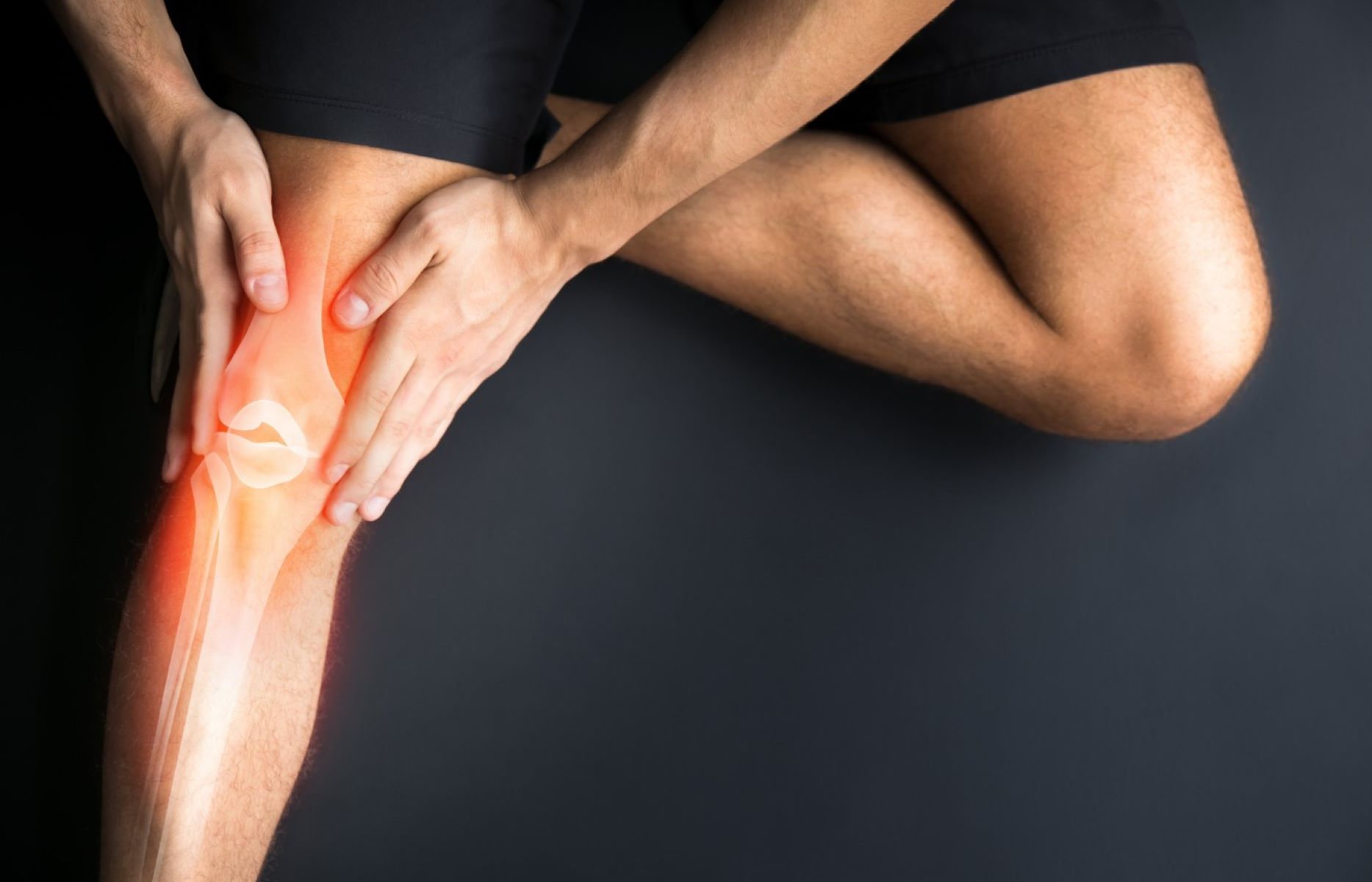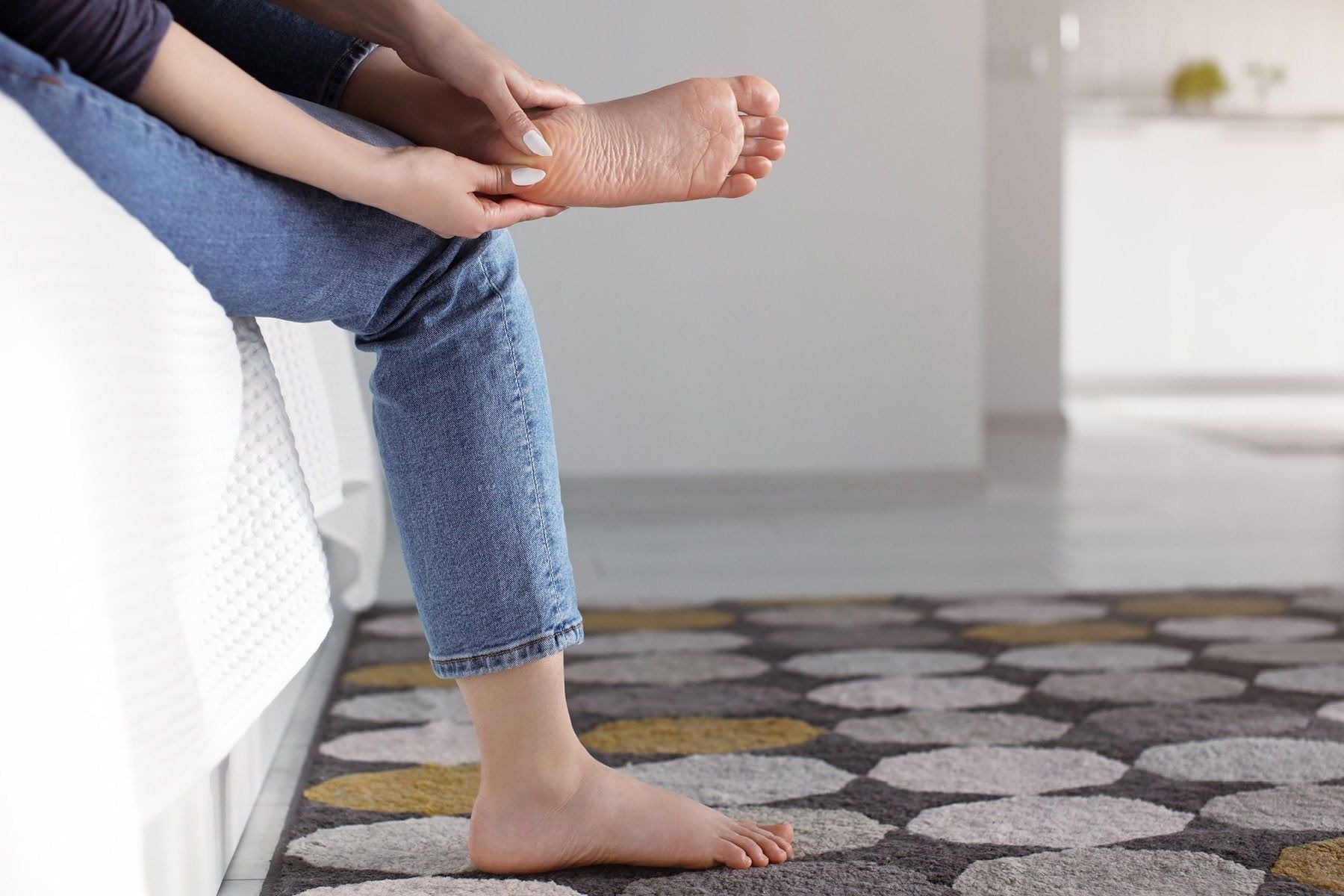Home>Health & Nutrition>Understanding The Relationship Between Endometriosis And Running


Health & Nutrition
Understanding The Relationship Between Endometriosis And Running
Published: February 23, 2024
Discover the impact of endometriosis on running and how to manage it. Learn about the connection between health, nutrition, and this condition.
(Many of the links in this article redirect to a specific reviewed product. Your purchase of these products through affiliate links helps to generate commission for Therunningadvisor.com, at no extra cost. Learn more)
Table of Contents
Introduction
Endometriosis is a complex and often debilitating condition that affects millions of women worldwide. It is a condition in which tissue similar to the lining inside the uterus, known as the endometrium, begins to grow outside the uterus. This can lead to severe pelvic pain, irregular menstrual cycles, and in some cases, fertility issues. The impact of endometriosis extends beyond physical symptoms, often affecting women's emotional well-being and overall quality of life.
In recent years, there has been growing interest in the potential benefits of physical activity, particularly running, for women with endometriosis. Running, a form of aerobic exercise, has been shown to offer numerous health benefits, including improved cardiovascular fitness, stress reduction, and enhanced mood. However, the relationship between endometriosis and running is multifaceted, and it is essential to understand both the potential advantages and risks associated with this form of exercise for women with endometriosis.
As we delve into the intricacies of this relationship, it is crucial to explore how running can positively impact the lives of women living with endometriosis. Additionally, we will examine the potential challenges and risks that women with endometriosis may encounter while engaging in running activities. By gaining a comprehensive understanding of these dynamics, women with endometriosis can make informed decisions about incorporating running into their lifestyle while effectively managing their symptoms.
The following sections will provide valuable insights into the impact of endometriosis on women's health, the potential benefits and risks of running for women with endometriosis, and practical tips for managing endometriosis symptoms while engaging in running activities. Through this exploration, we aim to empower women with endometriosis to embrace physical activity in a manner that supports their overall well-being and enhances their quality of life.
What is Endometriosis?
Endometriosis is a chronic and often painful condition that occurs when tissue similar to the lining of the uterus, known as the endometrium, grows outside the uterus. This misplaced tissue can be found on the ovaries, fallopian tubes, outer surface of the uterus, and other organs within the pelvic cavity. In some rare cases, it may even spread beyond the pelvic region.
The primary characteristic of endometriosis is the development of lesions or implants, which respond to the hormonal changes that occur during the menstrual cycle. As a result, these implants may bleed, leading to inflammation, scarring, and the formation of adhesions in the affected areas. This process can cause significant pain, particularly during menstruation, sexual intercourse, and bowel movements.
Endometriosis is a complex and multifaceted condition that affects women of reproductive age, with symptoms typically emerging in the late teens or early twenties. However, it is important to note that the severity of symptoms does not necessarily correlate with the extent of the condition. Some women with extensive endometriosis may experience minimal discomfort, while others with milder forms of the condition may endure severe symptoms.
The exact cause of endometriosis remains a subject of ongoing research, with several theories proposed to explain its development. These include retrograde menstruation, immune system disorders, hormonal imbalances, and genetic predisposition. Additionally, environmental factors and lifestyle choices may also play a role in the onset and progression of the condition.
Endometriosis can have a profound impact on various aspects of a woman's life, including her physical health, emotional well-being, and reproductive capabilities. The chronic pain and other symptoms associated with endometriosis can significantly disrupt daily activities, work, and relationships, leading to a diminished quality of life for many women.
As a complex and often misunderstood condition, endometriosis requires a comprehensive approach to diagnosis, treatment, and management. By gaining a deeper understanding of the nature of endometriosis, women and healthcare professionals can work together to develop effective strategies for addressing the challenges posed by this condition and improving the overall well-being of those affected.
The Impact of Endometriosis on Women's Health
Endometriosis exerts a profound and multifaceted impact on the overall health and well-being of women. The physical manifestations of the condition, including chronic pelvic pain, painful menstruation, and discomfort during sexual intercourse, can significantly diminish a woman's quality of life. The persistent nature of these symptoms often leads to heightened stress, anxiety, and depression, further exacerbating the emotional toll of the condition.
Beyond the immediate physical and emotional challenges, endometriosis can also disrupt various aspects of a woman's life, including her social interactions, work responsibilities, and overall sense of vitality. The unpredictable nature of the condition, with symptoms fluctuating throughout the menstrual cycle, can make it challenging for women to engage in daily activities and maintain a consistent routine. This can lead to feelings of frustration, isolation, and a sense of being misunderstood by others who may not fully grasp the impact of the condition.
Furthermore, the potential implications of endometriosis on fertility and reproductive health can introduce additional layers of concern and uncertainty for women who aspire to conceive. The presence of endometriosis may increase the risk of infertility, making it essential for women to seek early intervention and specialized care to address these reproductive challenges.
The financial burden associated with managing endometriosis should not be overlooked. The costs of medical consultations, diagnostic tests, and ongoing treatments can place a significant strain on a woman's financial resources, potentially limiting her access to comprehensive care and support services.
In summary, the impact of endometriosis on women's health extends far beyond the physical symptoms, permeating various facets of their lives. It is crucial for healthcare providers, support networks, and society at large to recognize the profound and often hidden challenges faced by women with endometriosis. By fostering greater awareness, understanding, and empathy, we can collectively work towards improving the quality of life for those affected by this complex and often misunderstood condition.
The Benefits of Running for Women with Endometriosis
Engaging in regular physical activity, such as running, can offer a myriad of benefits for women living with endometriosis. While the impact of exercise on endometriosis is a subject of ongoing research, several potential advantages have been identified, highlighting the positive role that running can play in managing the symptoms and overall well-being of women with this condition.
1. Pain Management:
Running and other forms of aerobic exercise have been associated with the release of endorphins, often referred to as "feel-good" hormones. These natural chemicals can help alleviate pain and promote a sense of well-being, potentially reducing the intensity of pelvic discomfort and menstrual cramps experienced by women with endometriosis.
2. Stress Reduction:
The rhythmic and repetitive nature of running can serve as a powerful stress-reliever. Stress has been shown to exacerbate the symptoms of endometriosis, making it crucial for women to adopt strategies that help manage and mitigate stress levels. Engaging in regular running sessions can contribute to stress reduction, promoting a more balanced and resilient emotional state.
3. Improved Mood and Mental Well-being:
Running has been linked to enhanced mood and mental well-being, offering a natural and accessible means for women with endometriosis to uplift their spirits and combat feelings of anxiety or depression often associated with the condition. The sense of accomplishment and empowerment derived from regular running can positively impact a woman's overall outlook on life, fostering a greater sense of resilience and optimism.
4. Enhanced Cardiovascular Fitness:
Regular running can contribute to improved cardiovascular fitness, enhancing overall endurance and stamina. This can be particularly beneficial for women with endometriosis, as it may help counteract the fatigue and physical limitations often associated with the condition, enabling them to engage in daily activities with greater ease and vitality.
5. Weight Management:
Maintaining a healthy weight is important for women with endometriosis, as excess body fat can produce estrogen, potentially exacerbating the symptoms of the condition. Running, as a form of aerobic exercise, can aid in weight management, promoting a healthy body composition and potentially reducing the impact of estrogen on the progression of endometriosis.
Incorporating running into a comprehensive management plan for endometriosis can offer women a holistic approach to addressing the challenges posed by the condition. It is important for individuals to consult with healthcare professionals to determine the most suitable exercise regimen based on their unique circumstances and overall health status. By embracing the potential benefits of running, women with endometriosis can take proactive steps towards enhancing their physical and emotional well-being, ultimately empowering them to lead fulfilling and active lives.
Potential Risks of Running for Women with Endometriosis
While running can offer numerous benefits for women with endometriosis, it is essential to acknowledge the potential risks and challenges associated with this form of exercise. Understanding these risks can help women make informed decisions about incorporating running into their lifestyle while effectively managing their symptoms.
-
Impact on Pelvic Pain:
Running, particularly high-impact activities, may exacerbate pelvic pain for some women with endometriosis. The repetitive jarring motion and increased abdominal pressure during running can potentially intensify pelvic discomfort, leading to heightened pain levels during and after exercise. It is important for women to listen to their bodies and adjust their running intensity and duration based on their individual pain thresholds. -
Hormonal Imbalances:
Endometriosis is influenced by hormonal fluctuations, particularly estrogen levels. Intense or excessive exercise, such as prolonged running sessions, can potentially disrupt hormonal balance, impacting the progression of the condition. Women with endometriosis should be mindful of their exercise intensity and duration to avoid potential hormonal imbalances that may exacerbate their symptoms. -
Fatigue and Exhaustion:
Endometriosis often leads to chronic fatigue and decreased energy levels. While running can contribute to improved fitness, excessive exertion may lead to heightened fatigue, potentially exacerbating existing feelings of exhaustion. It is crucial for women with endometriosis to strike a balance between reaping the benefits of running and avoiding excessive physical strain that could further deplete their energy reserves. -
Risk of Overexertion:
Women with endometriosis may be more susceptible to overexertion due to the physical toll of the condition on their bodies. Pushing too hard during running sessions can lead to increased stress on the pelvic region and other affected areas, potentially triggering flare-ups of pain and discomfort. It is important for women to adopt a gradual and mindful approach to running, allowing their bodies to adapt to the physical demands of the exercise. -
Emotional Impact:
The pressure to engage in regular exercise, including running, can inadvertently contribute to feelings of guilt or inadequacy for women with endometriosis, especially during periods of heightened symptoms. Striking a balance between the desire to stay active and the need for adequate rest and self-care is essential for preserving emotional well-being.
By recognizing these potential risks, women with endometriosis can approach running with a heightened awareness of their individual needs and limitations. Consulting with healthcare professionals and adopting a personalized approach to exercise can help women navigate the potential risks while harnessing the benefits of running to support their overall well-being.
Tips for Managing Endometriosis Symptoms While Running
-
Listen to Your Body: Pay close attention to your body's signals during running sessions. If you experience heightened pelvic pain or discomfort, consider modifying your running intensity or opting for low-impact alternatives, such as brisk walking or cycling.
-
Prioritize Rest and Recovery: Incorporate rest days into your running routine to allow your body to recuperate. Endometriosis can contribute to fatigue, and adequate rest is crucial for managing symptoms and preventing excessive physical strain.
-
Mindful Breathing Techniques: Practice deep, mindful breathing while running to promote relaxation and reduce stress. Focused breathing can help alleviate muscle tension and enhance your overall running experience.
-
Supportive Apparel: Invest in supportive and comfortable running attire, including well-fitted sports bras and moisture-wicking clothing. Proper attire can minimize discomfort and provide essential support for the pelvic region.
-
Hydration and Nutrition: Stay adequately hydrated before, during, and after running to support your body's overall function. Additionally, maintain a balanced diet rich in nutrients to fuel your running sessions and promote overall well-being.
-
Warm-Up and Cool Down: Prioritize warm-up exercises to prepare your body for running and incorporate gentle stretching during your cool-down routine. These practices can help prevent muscle tension and reduce the risk of discomfort during and after running.
-
Open Communication: Communicate with your healthcare provider about your running regimen and any challenges you may encounter. Your healthcare provider can offer personalized guidance and support to ensure that your running activities align with your overall management plan for endometriosis.
-
Mind-Body Practices: Consider integrating mind-body practices, such as yoga or meditation, into your routine to complement your running activities. These practices can contribute to stress reduction and promote a holistic approach to managing endometriosis symptoms.
-
Modify Running Terrain: Opt for softer running surfaces, such as trails or tracks, to minimize impact on your joints and pelvic region. Avoiding hard pavement or concrete surfaces can help reduce the risk of exacerbating pelvic discomfort during running.
-
Emotional Well-being: Prioritize your emotional well-being by acknowledging the impact of endometriosis on your running journey. Be kind to yourself, celebrate your achievements, and seek support from fellow runners or support groups to foster a positive and empowering running experience.
By implementing these tips and personalized strategies, women with endometriosis can navigate the challenges of running while effectively managing their symptoms. It is essential to approach running with mindfulness, self-compassion, and a proactive attitude towards supporting overall well-being in the context of endometriosis.
Conclusion
In conclusion, the relationship between endometriosis and running is multifaceted, encompassing both potential benefits and risks for women living with this complex condition. While running offers numerous advantages, including pain management, stress reduction, and enhanced mood, it is essential for women with endometriosis to approach this form of exercise with mindfulness and a deep understanding of their individual needs.
The impact of endometriosis on women's health extends beyond physical symptoms, permeating various facets of their lives, including emotional well-being, social interactions, and reproductive aspirations. The chronic nature of the condition necessitates a comprehensive approach to management, encompassing both medical interventions and lifestyle modifications.
For women considering incorporating running into their lifestyle, it is crucial to listen to their bodies, prioritize rest and recovery, and adopt mindful breathing techniques to support their overall well-being. Additionally, open communication with healthcare providers and the integration of supportive apparel, hydration, and nutrition are essential elements in navigating the potential risks associated with running while managing endometriosis symptoms.
By embracing a holistic approach to physical activity and well-being, women with endometriosis can harness the potential benefits of running while effectively managing the challenges posed by the condition. It is imperative for healthcare professionals, support networks, and society at large to foster greater awareness and understanding of the profound impact of endometriosis on women's lives, providing the necessary support and resources to empower those affected by this condition.
Ultimately, the relationship between endometriosis and running underscores the importance of personalized care, informed decision-making, and a compassionate approach to physical activity. By recognizing the unique needs and experiences of women with endometriosis, we can collectively work towards creating a supportive and inclusive environment that enables them to lead fulfilling and active lives, embracing the potential benefits of running while effectively managing the complexities of this condition.














